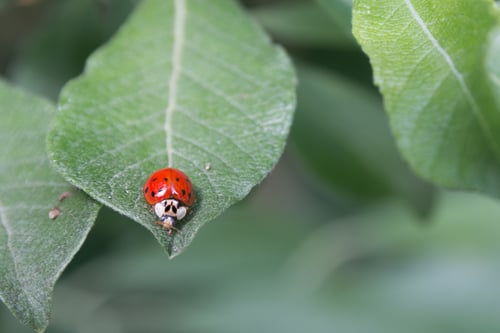Insights
The Cost of Keeping Food Chemical-Free and Organic
Regardless of the crop – fruit, vegetables, grain, or pulses – organic production has cost factors that differ from equivalent non-organic farms.
 Before deciding to go organic it is important to understand all costs and benefits. One cost (for any farmer), is the time it takes to develop a production method that will result in wide enough profit margins to stay in business. Organic farmers have to maintain productive crop growth in a certifiably organic way.
Before deciding to go organic it is important to understand all costs and benefits. One cost (for any farmer), is the time it takes to develop a production method that will result in wide enough profit margins to stay in business. Organic farmers have to maintain productive crop growth in a certifiably organic way.
All organic producers in the United States must meet USDA Organic Standards to become certified. Whether their products are fruits and vegetables, dairy and cheese, or lentils, chickpeas, and barley – they must be audited and certified by the USDA. Documentation of everything – from how much and what you are growing to what and how many inputs you are using in your production – is part of certification and absolutely necessary to be prepared for the USDA’s inspection. Upon passing inspection, organic farmers then have to pay a fee of a few hundred to several thousand dollars.
Transitioning from Conventional to Organic
When a conventional farmer decides it’s time to go organic, certification doesn’t happen overnight. Farmland must be free of prohibited non-organic substances for at least three years if it has been in production. During this transition period, the producer cannot charge organic premiums on their product. Land that has been set aside in the Conservation Reserve Program can be moved immediately into organic production if synthetic chemicals have not been applied in the last 3 years.
Once a farmer has reached the end of the transition period and is ready to plant, management of soil fertility must meet organically certifiable standards. Tillage, organic cultivation practices, crop rotations, and cover crops are a few methods of managing soil fertility and crop nutrients. This can be augmented by animal waste; however, the organic producer must then have livestock – or at the very least, livestock manure – available to implement this method. Alternatively, the farmer can apply natural amendments or allowed synthetic fertilizers which the USDA names on their “National List of Allowed and Prohibited Substances”[1].
To maintain certification, the farmer must plant certified organic seed (unless those are not available on the market) or feed certified organic feed to livestock.
More Weeds, More Hand Labor
During the three year transition period, the soil being left untouched by prohibited chemical substances can become overrun by weeds. Instead of using herbicides, the organic farmer uses either a hand-weeding method or livestock[2]. Should the farmer choose to hand-weed, they’re looking at an enormous task that involves a lot of human labor.
Livestock is one of the best ways to manage weeds, but only in the context of grazing – they wouldn’t be used in say, a wheat field. You can also resort to burning weeds or tilling. However, tilling has its own consequences to address. Weeds are something that will always need dealt with and some weeds are worse than others, the main thing is to get them under control.
No Synthetic Additives
Conventional methods allow for use of chemical pesticides to kill off things like naturally occurring, malignant fungi in crop soil, but this is not something organic producers can concede to without losing their certification. Instead, an organic producer must find an approved, organic solution to their pest problem. Let’s say a crop of heirloom tomatoes was afflicted by aphids. The organic farmer would counter the aphids with the purchase of lady bugs which can be bought online and shipped live for ready use. Though lady bugs are not a colossal expense (around $20 from a site like Amazon.com), they’re an additional cost to the organic producers who use them. If there is no alternative the national organic program can approve a synthetic pesticide, but that is rarity and can only be used if it is approved.
Altogether, sustaining profitability is a struggle for any farmer, organic or conventional. While conventional farms may be barely more marginal than organic during good years, years that have hardships such as drought can see organic making better margins. It’s no secret farming is a hard life which sees challenge, innumerable costs, and, at end of season, a lot of time and effort spent on getting products to sell. Market success does not happen on its own. Before WWI and WWII organic farming was the only method of farming. Agricultural chemicals were developed by manufacturers of war chemicals and it’s worth noting that the certified market as a way of recognizing the organic growing process has only really been established since the 1990s in response to the use of chemicals.
The end-consumer can make a difference in reducing these challenges organic producers face, and in doing so reduce the cost of organic products. If more consumers purchased organic products like heirloom grains, the price of these foods would decrease as they became more commonly bought. Even at lower prices, with enough consumers purchasing foods produced organically, the cost burdens to organic farmers could be offset by the growth in number of consumers in their market. All told, converting to organic production methods not only improves the health of our Earth’s soil, but also the health of each and every living thing that lives off of what is grown from that soil.